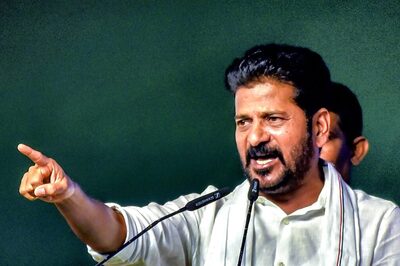
views
On August 5, 2019, the President of India took a historic step by putting his seal on the Constitution (Application to Jammu and Kashmir) Order, 2019, issued under Article 370(1) of the Constitution of India. While exercising power under Article 370 (1), the President has repealed all the clauses of Article 370, except 370(1). However, Article 370(1) has been extended with certain modifications. By virtue of those modifications, all the provisions of the Constitution of India shall be applicable to Jammu and Kashmir. The development is momentous as it lays the foundation of the state’s complete and final integration with India.
It may be recalled that in 1954, these same powers were abused to issue the Constitution (Application to Jammu and Kashmir) Order, 1954, to distort the constitutional framework applicable in Jammu and Kashmir by modifying and effacing several provisions that constituted part of the basic structure of the Indian Constitution. The sole intent behind the 1954 Order was to give a false impression that Jammu and Kashmir was different from other states that had merged with India at the time of Independence. However, with the issuance of the 2019 Order, all previous constitutional orders, including that of 1954, have been reduced to a remnant of historical injustices.
The intent and implications of the 2019 Order are very clear. First, it supersedes every order or amendment that was made applicable to the state of Jammu and Kashmir until today. This includes the 1954 Order that inserted Article 35A — the controversial provision that denied several rights to all Indian citizens except permanent residents. Second, being the most important aspect, is that the provisions of the Indian Constitution and amendments thereto shall also become applicable to the state like any other state or Union Territory.
Among these significant changes, the other salient features of the 2019 Order include the addition of Clause (4) of Article 367 of the Indian Constitution in its application to Jammu and Kashmir. Article 367 is the interpretation clause in the Indian Constitution. With the addition of clause (4) to Article 367, any reference to the government of the state of Jammu and Kashmir shall mean to be the Governor of Jammu and Kashmir acting on the advice of his council of ministers. This means that with the commencement of the 2019 Order, powers vested in the state government shall now be exercised by the Governor acting on the aid and advice of the council of ministers. Put simply, the Governor of the state of Jammu and Kashmir would be at par with the Governor of any other Indian state who acts on the aid and advice of his council of ministers.
Another addition made through the order is the replacement of the word ‘Constituent Assembly’ in proviso to Clause (3) of the Article 370 with ‘Legislative Assembly of the State’. Clause (3) of Article 370 dealt with the power of the President to make Article 370 inoperative by issuing a notification. However, before the amendment, such a notification could have been issued only on the recommendation of the Constituent Assembly of the state.
As the Constituent Assembly was dissolved after the state of Jammu and Kashmir adopted its Constitution in 1957, it was generally understood that Clause (3) had become infructuous. But with the substitution of ‘Constituent Assembly’ with ‘Legislative Assembly of the State’, clause (3) stands rejuvenated — paving the way for total abolition of Article 370 by issuing a Presidential notification on the recommendation of the Legislative Assembly.
As the state remains under President’s Rule, the powers of the Legislative Assembly have been assumed by Parliament under Article 356(b) of the Indian Constitution. Thus, power to give recommendation for abolishing Article 370 vests in Parliament, which under President’s Rule can be obtained by a simple majority of both Houses. Once Parliament gives its recommendations, the President would be entitled to issue a notification under Article 370(3) — paving the way for total repeal of Article 370 from the statute book.
With these landmark changes to the constitutional scheme in Jammu and Kashmir, the Narendra Modi government has also decided to reorganise the state of Jammu and Kashmir by dividing it into two Union Territories — Ladakh and Jammu and Kashmir. While Ladakh would be a Union Territory governed by the Lieutenant Governor without any legislature, the Union Territory of Jammu and Kashmir would be akin to the NCT of Delhi i.e. having a legislature with Governor as the administrative head. As successor state to Jammu and Kashmir, the provisions of the Indian Constitution as applied by the 2019 Order would continue to apply to the proposed Union Territory of Ladakh.
The intent behind the reorganisation of the state is unambiguously clear — to fulfill the demands made by the people of Ladakh for giving it the status of a Union Territory and effectively countering the cross-border state-sponsored terrorism plaguing Jammu and Kashmir for decades.
Albeit unprecedented, these constitutional reformations were long overdue. Unlike the previous political dispensations, the Modi government has demonstrated the political willingness to assimilate Jammu and Kashmir with India in the true sense. India should be proud to witness the near-end of Article 370 — the treacherous proposal that Dr BR Amebedkar opposed in 1949.
(The author heads Jammu-Kashmir Study Centre, a think tank on Jammu and Kashmir)


















Comments
0 comment